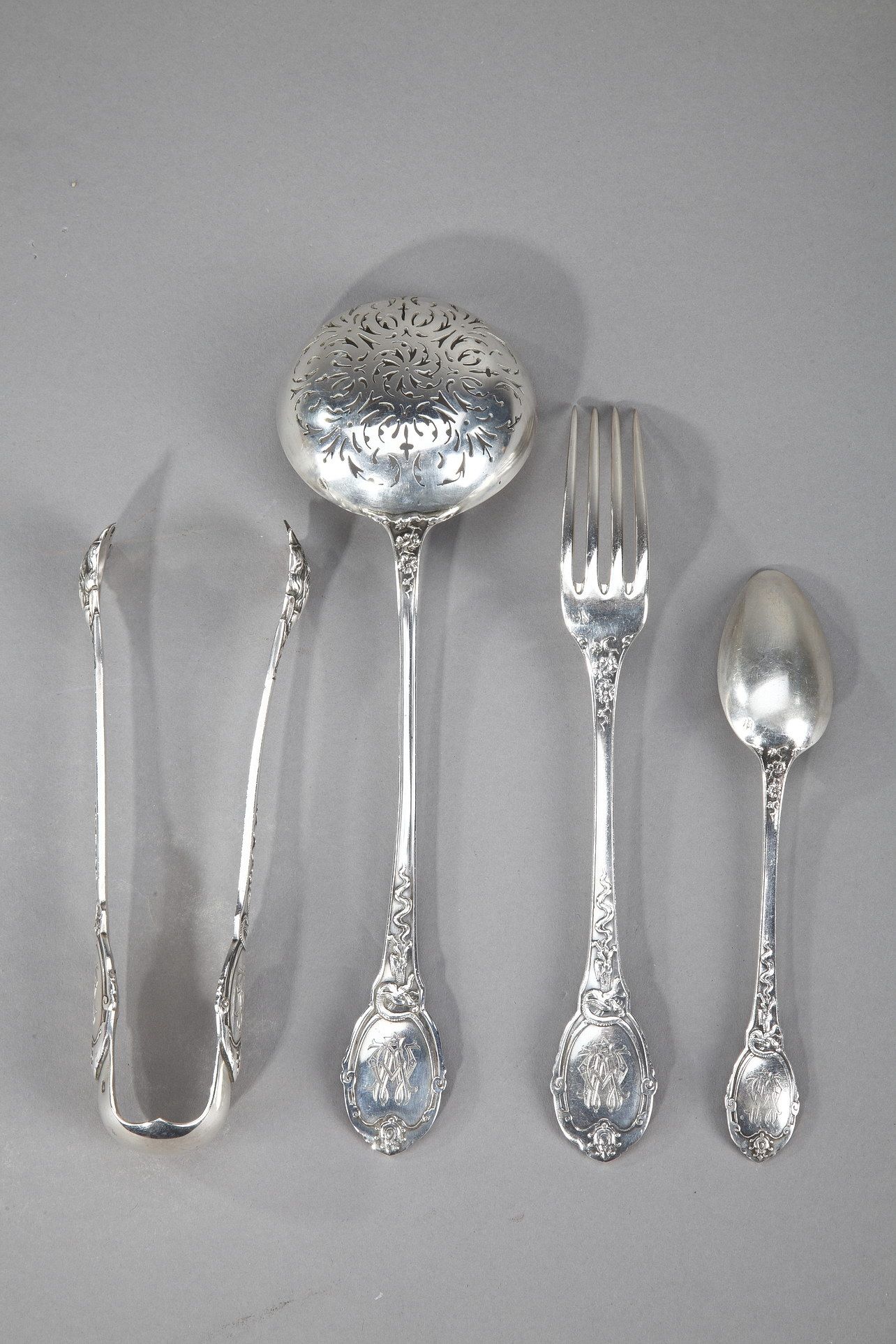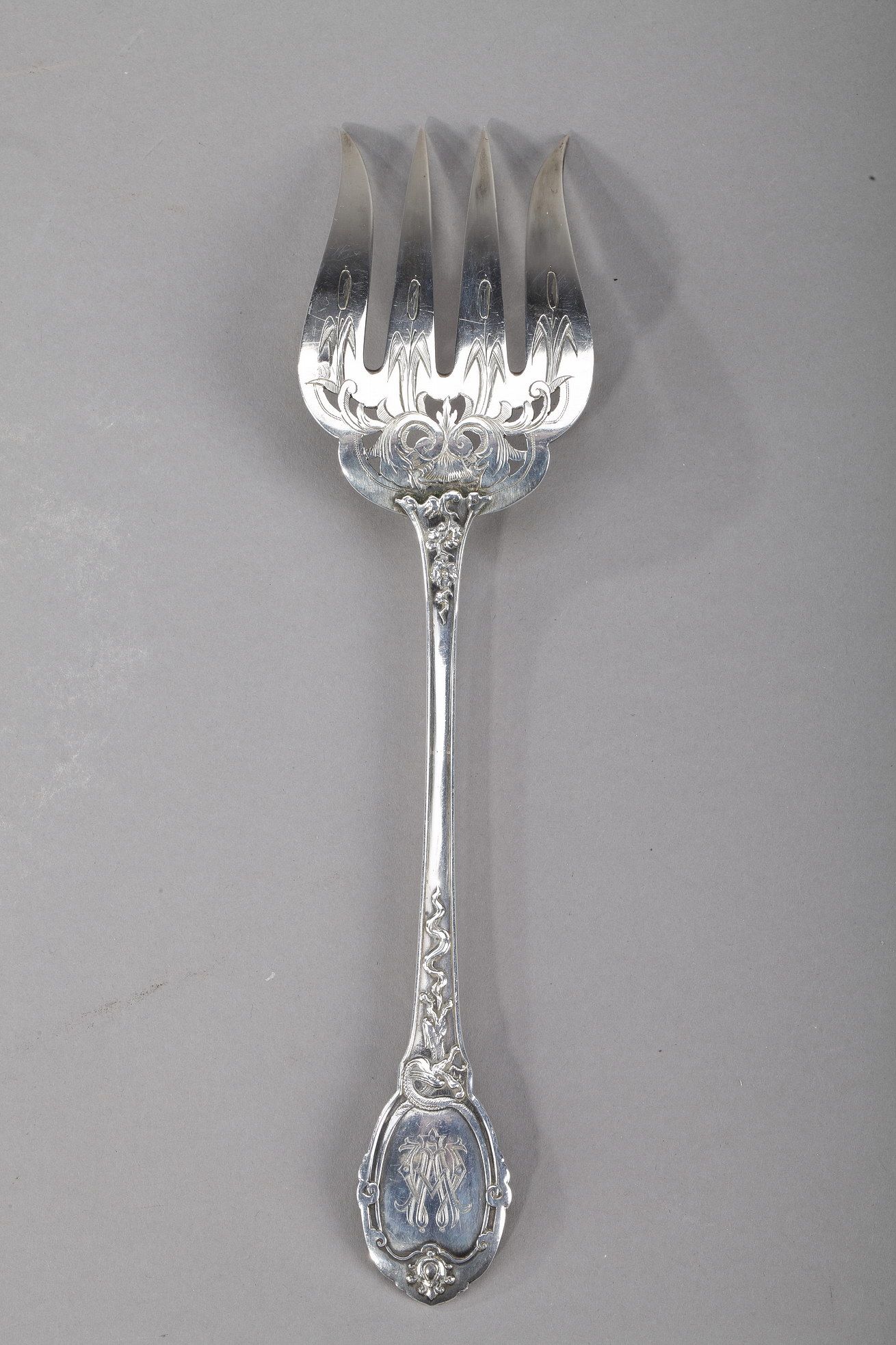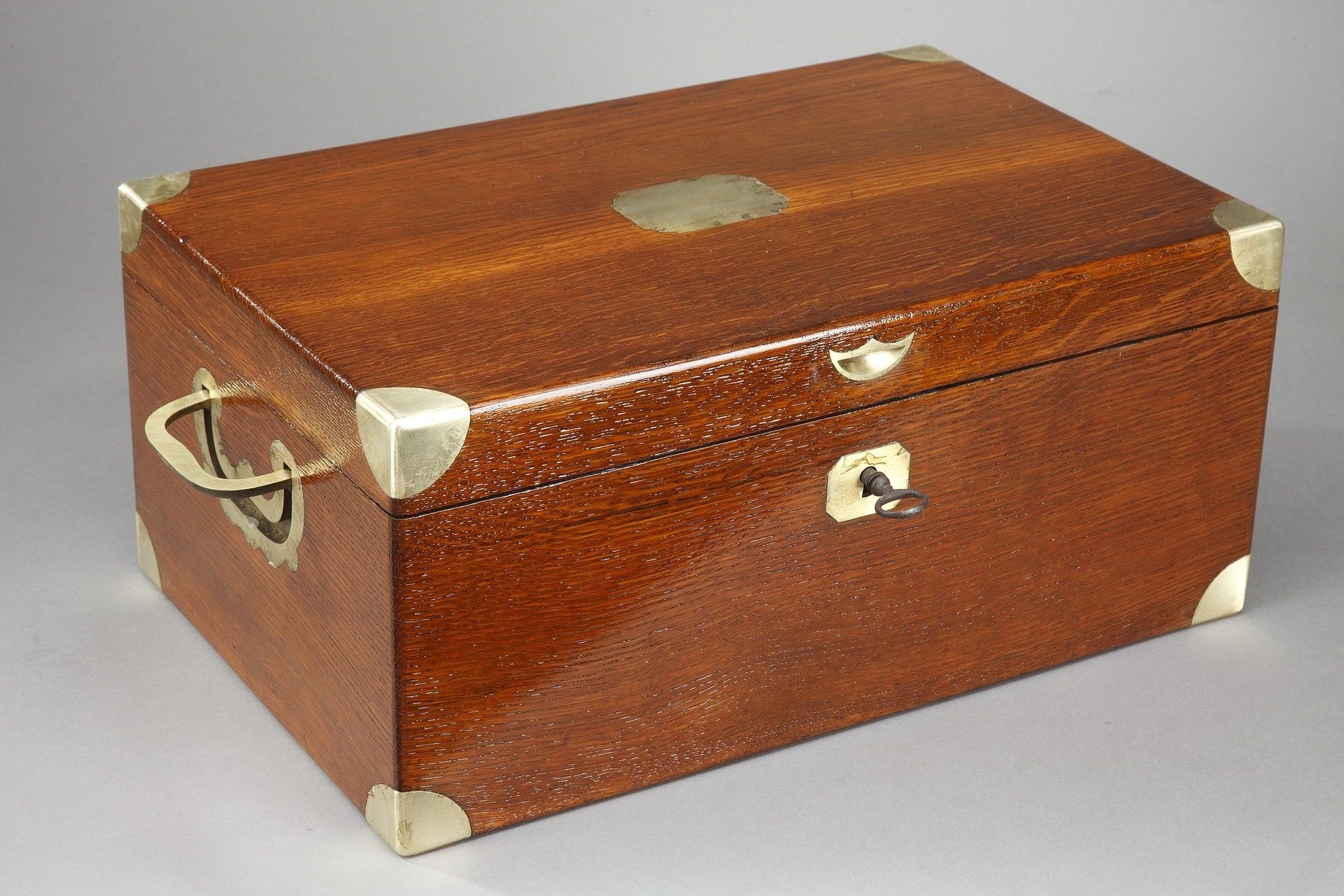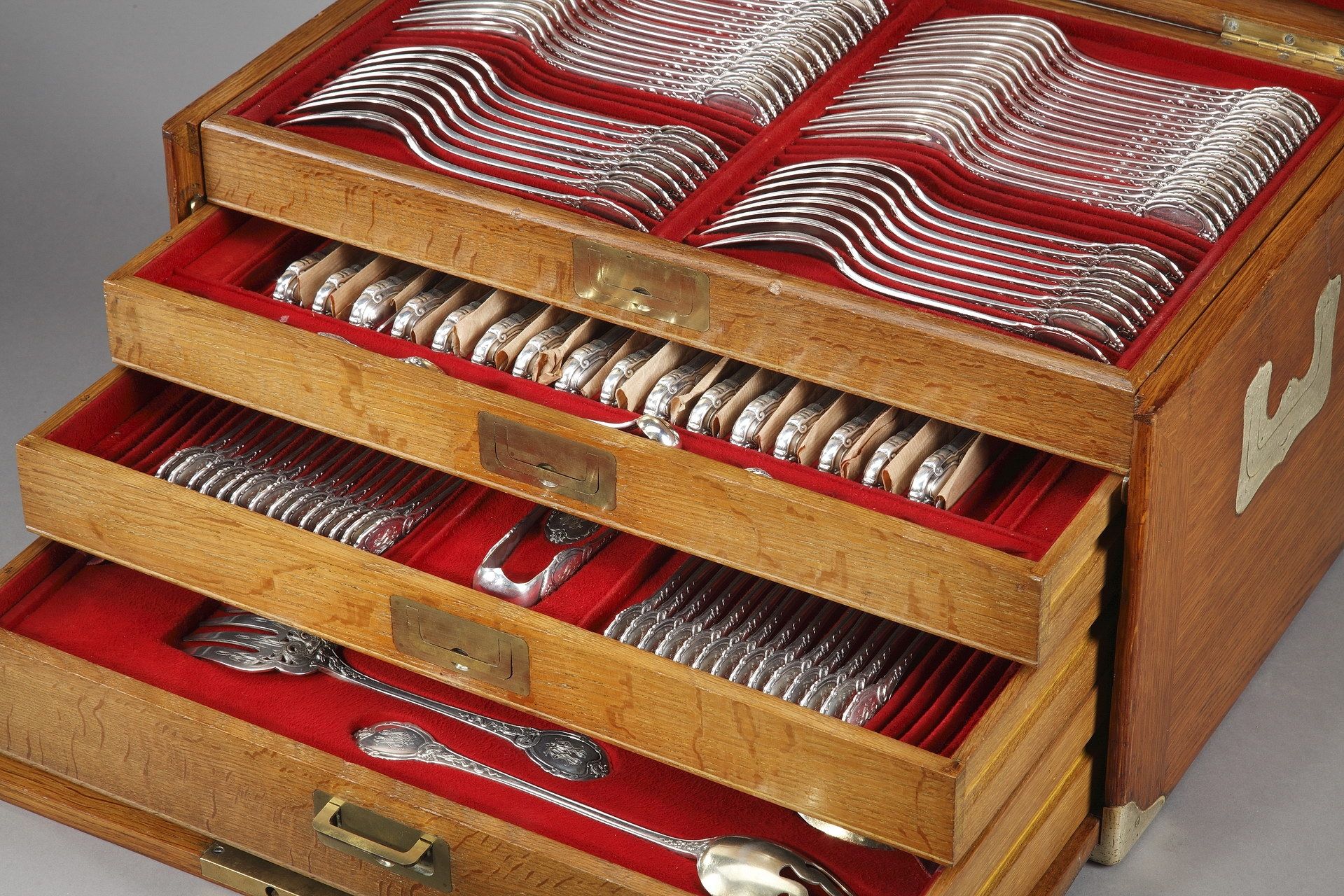The cutlery set, an 18th century invention
The practice of placing cutlery on the table, around each plate, became widespread from the 17th century onwards, and especially in the 18th century. The great royal, princely and seigniorial services then appeared, followed by other, more popular models, which entered collections. Made of gold, silver or brass, the cutlery was very finely worked, decorated with marine and fantastic animals, busts of men or women, religious representations, naturalistic motifs and even poems, in the German space. In the 18th and 19th centuries, tableware went from being real pieces of silverware during the Renaissance to real works of art, chiselled in many different ways according to the styles of each period.
The term "menagère" dates from the years 1945-1950. It refers to a set of cutlery housed in a box with a compartmentalized interior, often lined with cloth. It was first stamped in the 18th century when manufacturers developed a process to create forks and spoons from silver leaf. Individual table knives, often with mother-of-pearl or ivory handles, were then absent from the set. They only became part of it in the 19th century when, together with the fork and spoon, they became known as "silverware".
From the mid-19th century onwards, solid silver dinner services were offered as wedding gifts, enabling wealthy people to travel with their silverware. A symbol of prestige and social status, these silver services often bore their owner's mark: monogram or coat of arms, like our Art Nouveau flatware, whose handles are monogrammed "WA", or the flatware Gorini Frères, whose flatware features a coat of arms and the monogram "NT".
In addition to the basic service (large fork, soup spoon, large knife and dessert spoon), the silverware set could include a dessert set and a few other more specialised services, including :
- A fish serving set (with a wide, flat-tined fork and a spatula-shaped knife),
- A shellfish set (with an oyster set, a shellfish or snail fork and a lobster or crab fork),
- A dessert set (with fork and several dessert, ice-cream or mocha spoons).
The cutlery for each guest could be complemented by pieces designed to serve everyone. Among the most common were :
- Cutlery for serving vegetables (a soup spoon and a large fork),
- Cutlery for serving soup (a ladle),
- Cutlery for serving salad (a pair of large salad servers),
- Cutlery for serving sauce (a sauce spoon),
- Cutlery for serving fish (a large scoop and a large spatula), - Cutlery for serving pies (a flat knife or pie server).
Generally intended for 12 guests, the most sumptuous services could seat 60 or even 120. Our three silver menagères are very complete. They comprise 108, 122 and 164 pieces respectively, with numerous additional pieces: forks and spoons for entremet, small and large knives and various serving utensils.
How to recognize antique silver?
Most of the antique cutlery set on the market today are made of solid silver. But how do you recognise silver and, more importantly, how do you differentiate between solid silver and silver-plated metal?
Solid silver or silver-plated metal?
What is commonly known as sterling silver is actually an alloy of silver with another metal. Indeed, silver is too malleable to be used in its pure state. In this case, the alloy is made up of 925 thousandths of silver (92.5%), mixed with copper to make it more solid. The titration of silver differs from one country to another and from one era to another, but it is always subject to strict regulations.
Silver-plated metal refers to a metal object (usually copper or bronze) coated with a very thin layer of silver using the electroplating technique. Electroplating is a process invented in the 19th century by the Englishmen George and Henry Elkington, which enables ordinary metal to be coated with a layer of silver. The process was used in France by Charles Christofle, from 1844 onwards.
It is important to know how to differentiate between silver pieces and silver-plated pieces, which have a lower value.
Silver hallmarks
There are many elements to consider when evaluating a piece of silverware: weight, quality,goldsmith,appearance and style. But the most reliable element is the hallmark, which provides information on the precious metal used, the date of manufacture, the origin of the object and the author of the work.
In the 19th century, silverware manufactured in France was required to bear the guarantee hallmark, often in addition to the maker's hallmark:
The guarantee hallmark is affixed by the authorities guaranteeing the precious metal content of the object. There are two types of guarantee:
1. Thebig garantie or title mark: on nationally made objects tested by coupellation for gold, or by wet process for silver. From 1838 onwards, the guarantee mark for silver is a Minerva's head turned to the right. This very qualitative alloy is composed of 950 thousandths of silver (95%) for the 1st title, and 800 thousandths of silver (80%) for the 2nd title.
2. The small guarantee is affixed to works tested by touch or to objects that cannot bear the mark of the large hallmarks. From 1838, the small guarantee mark is a boar's head (800 thousandths, i.e. 80%), surrounded by a scroll.
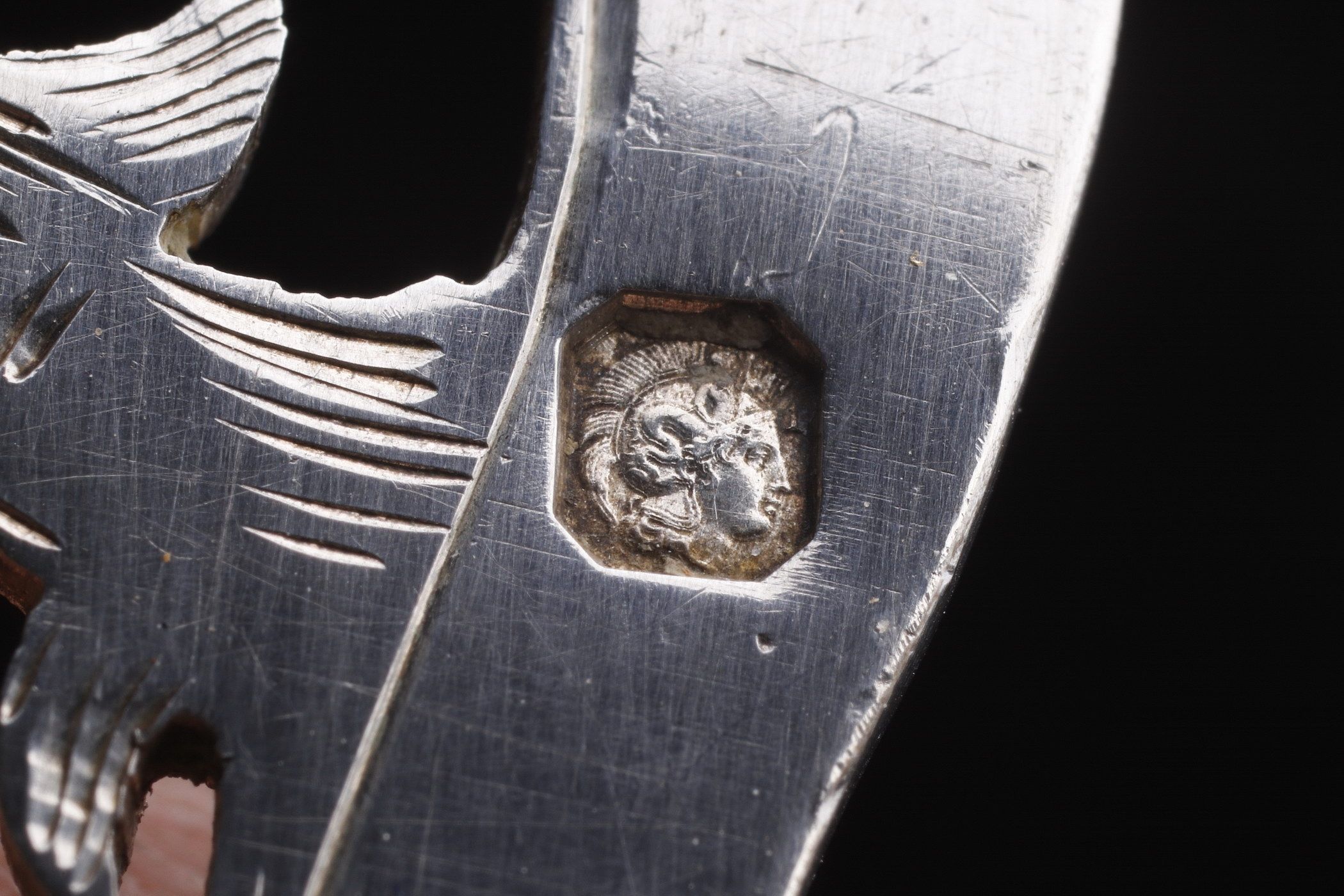
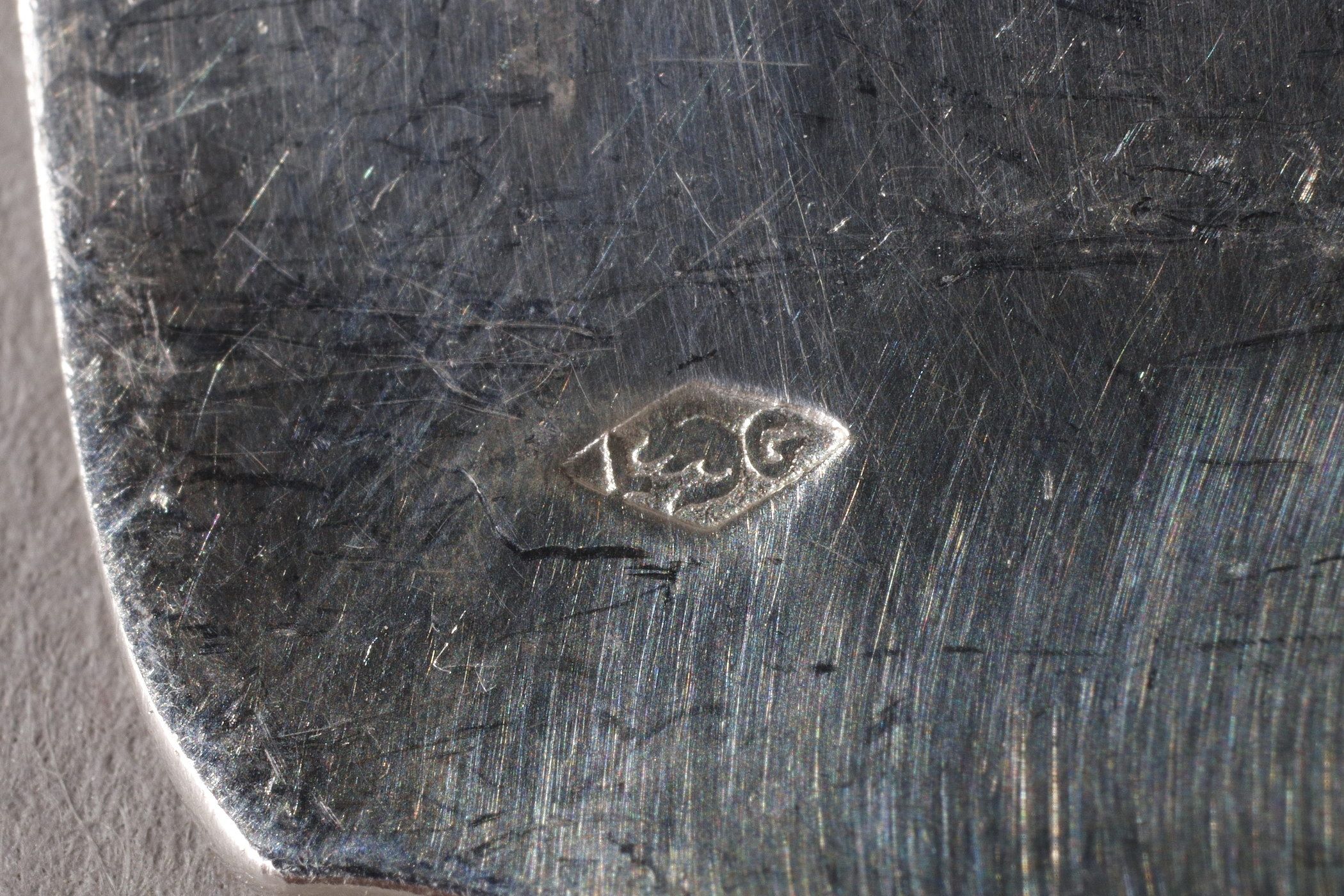
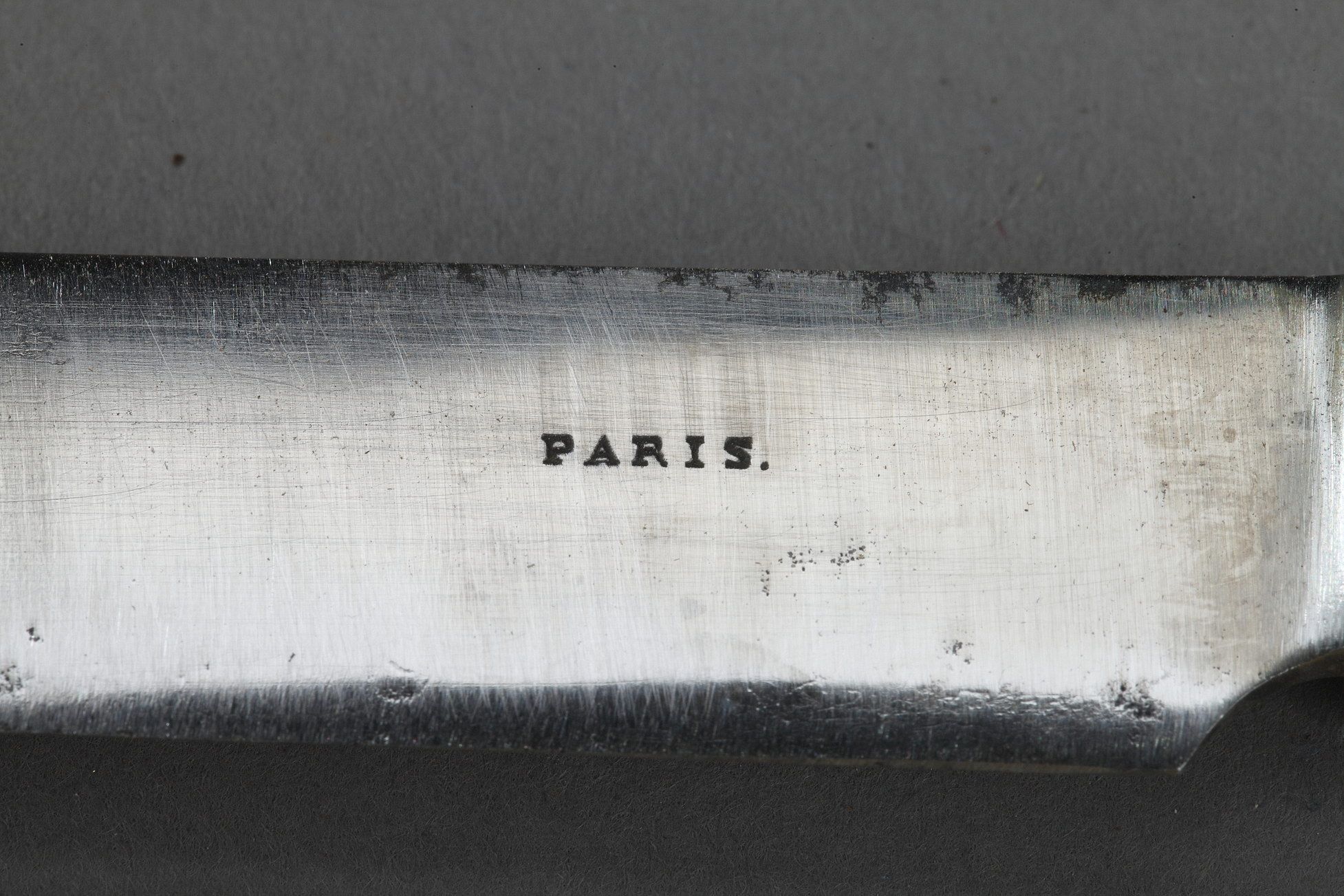
The hallmark is inscribed by the maker. In application of the law of 19 brumaire year VI (9 November 1797), one finds there his initials and a different symbol for each manufacturer. The shape of this hallmark is a diamond, with the symbol in the centre and the initials of the name and surname at each end. It represents the signature of the workshop that made the object. Each manufacturer is has to register with the guarantee service of his department and deposit the design of his master stamp.
In addition to the guarantee and master hallmarks, a silver piece can also be represented with the place where it was made, like our knives marked "Paris", or the signature of a well-known silversmith, like Henri Soufflot.
How to look after your silverware
Solid silver has a specific oxidation process, darkening after several months in contact with air, but a good cleaning is generally sufficient to restore its original lustre. Although tedious, silverware cleaning is highly effective, and many professional and home techniques are available to revive and brighten tarnished crockery.
Our solid silver cutlery sets are in very good general condition, with only slight oxidation in places. A light cleaning with water and alcohol is sufficient for the maintenance of these silver pieces. To do this, mix 50% household alcohol and 50% mineral water in a container. Then soak a cloth and rub gently until the black spots disappear. Finally, rinse with water and wipe with a soft cloth, then rub lightly to shine.
Once silverware has been cleaned, we recommend storing it in an enclosed space (in its original case, for example). The aim is to limit contact with ambient air as much as possible, to prevent oxidation.
Where to buy silver?
Antique, complete and restored silverware setsare very popular today. They are available for sale in flea markets, on specialised marketplaces, or in antique galleries like ours. In our online shop you can find solid silver household sets of very high quality. They include a large number of individual and service pieces, and are made by renowned silversmiths such as Henri Soufflot, Edmond Jamet and Gorini Frères. Complete and in excellent original condition, our cutlery are exquisitely decorated in Louis XV, neoclassical or Art Nouveau style. The silver cutlery are preserved in their original wooden case, monogrammed and marked by the jeweller.
dicover our silverware collection


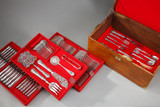
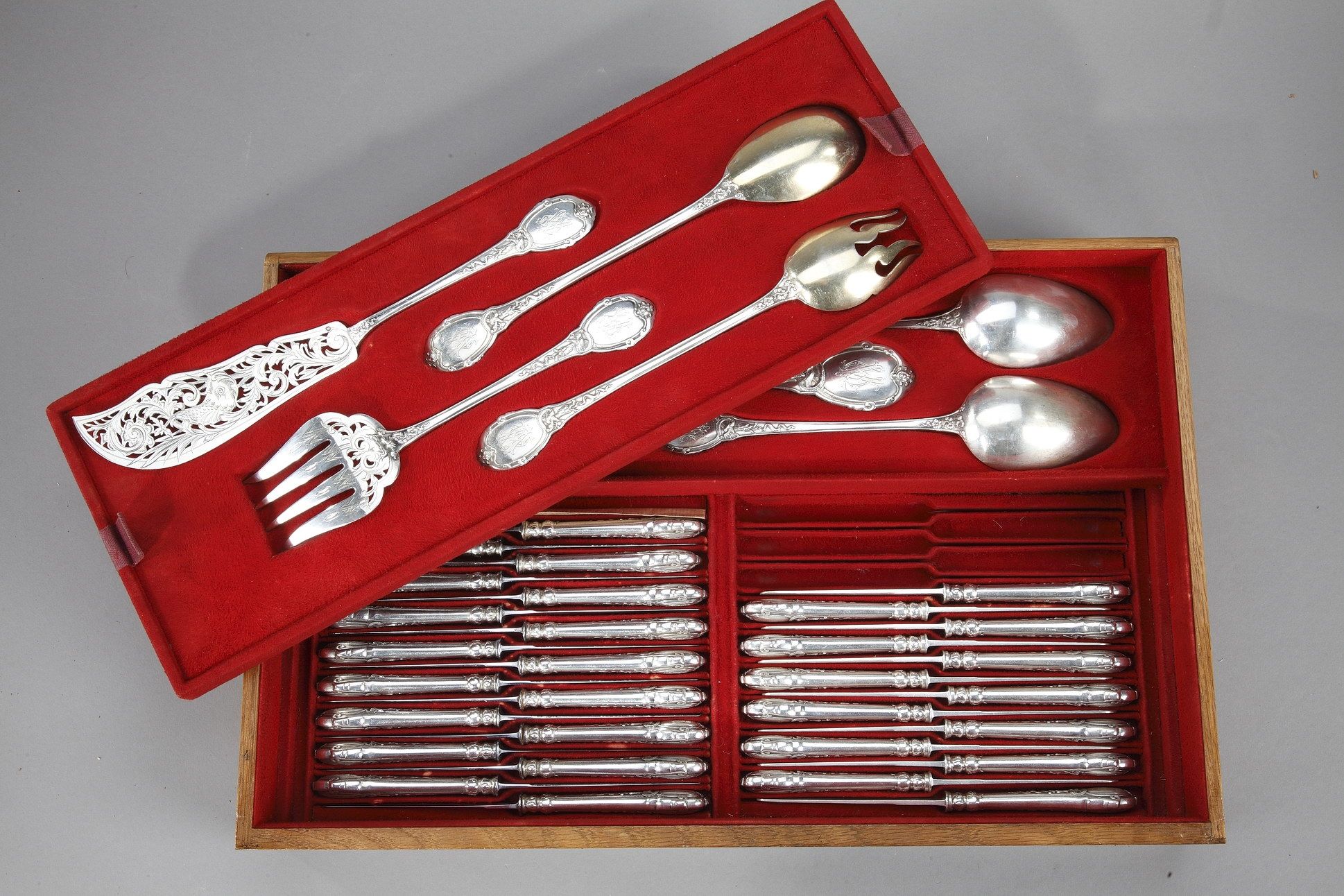
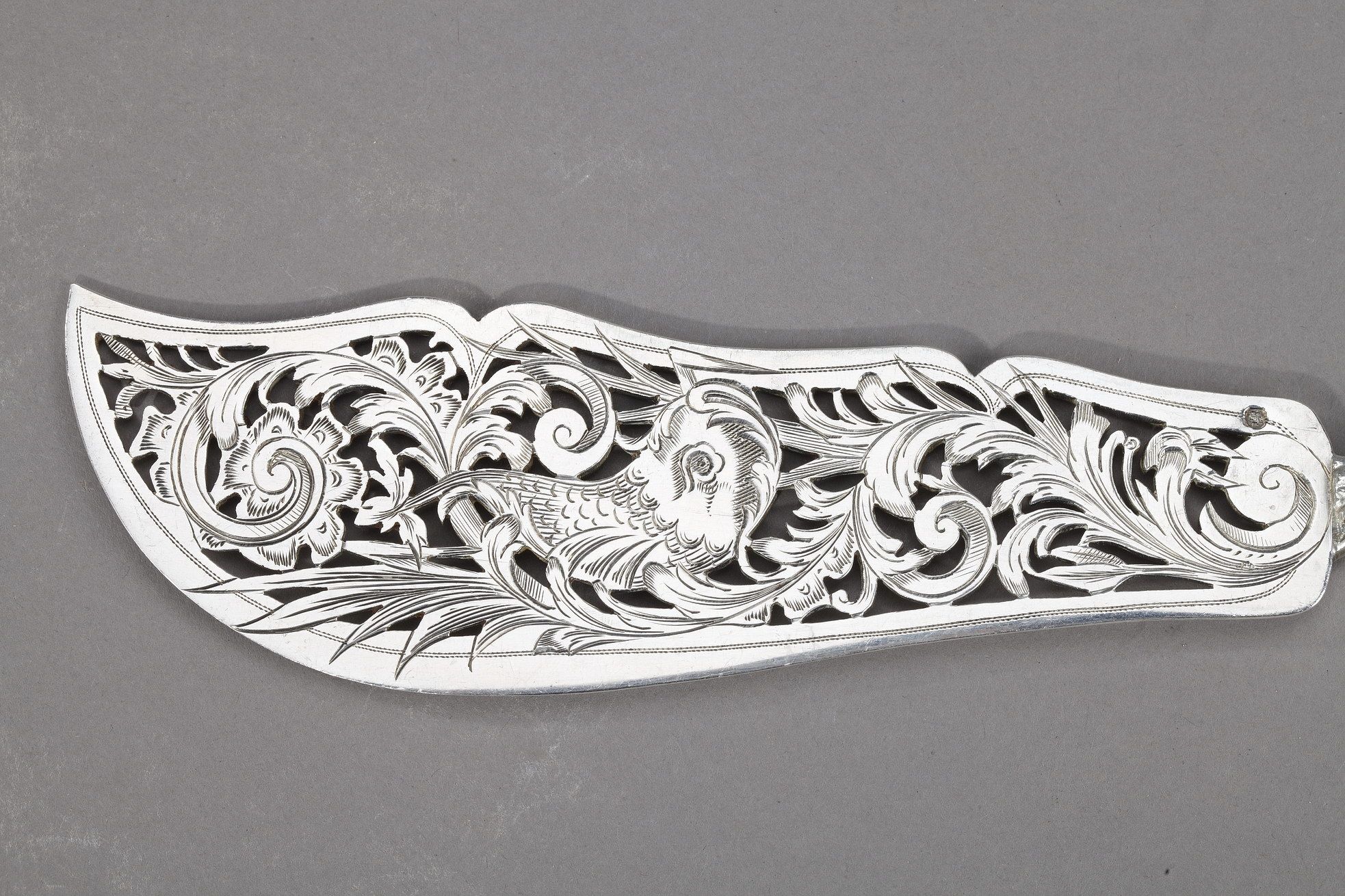
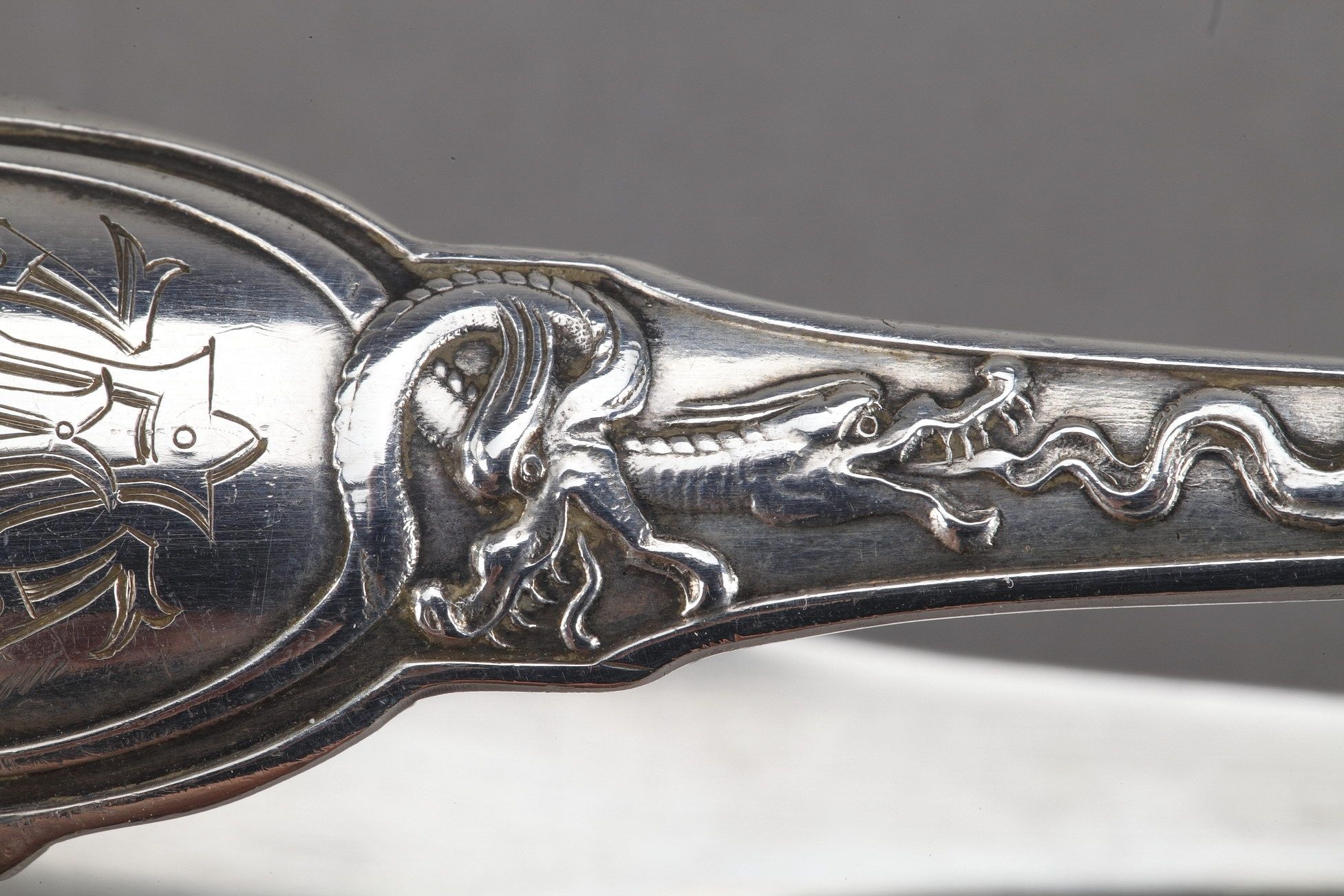 Henri Soufflot's silverware set, solid silver
Henri Soufflot's silverware set, solid silver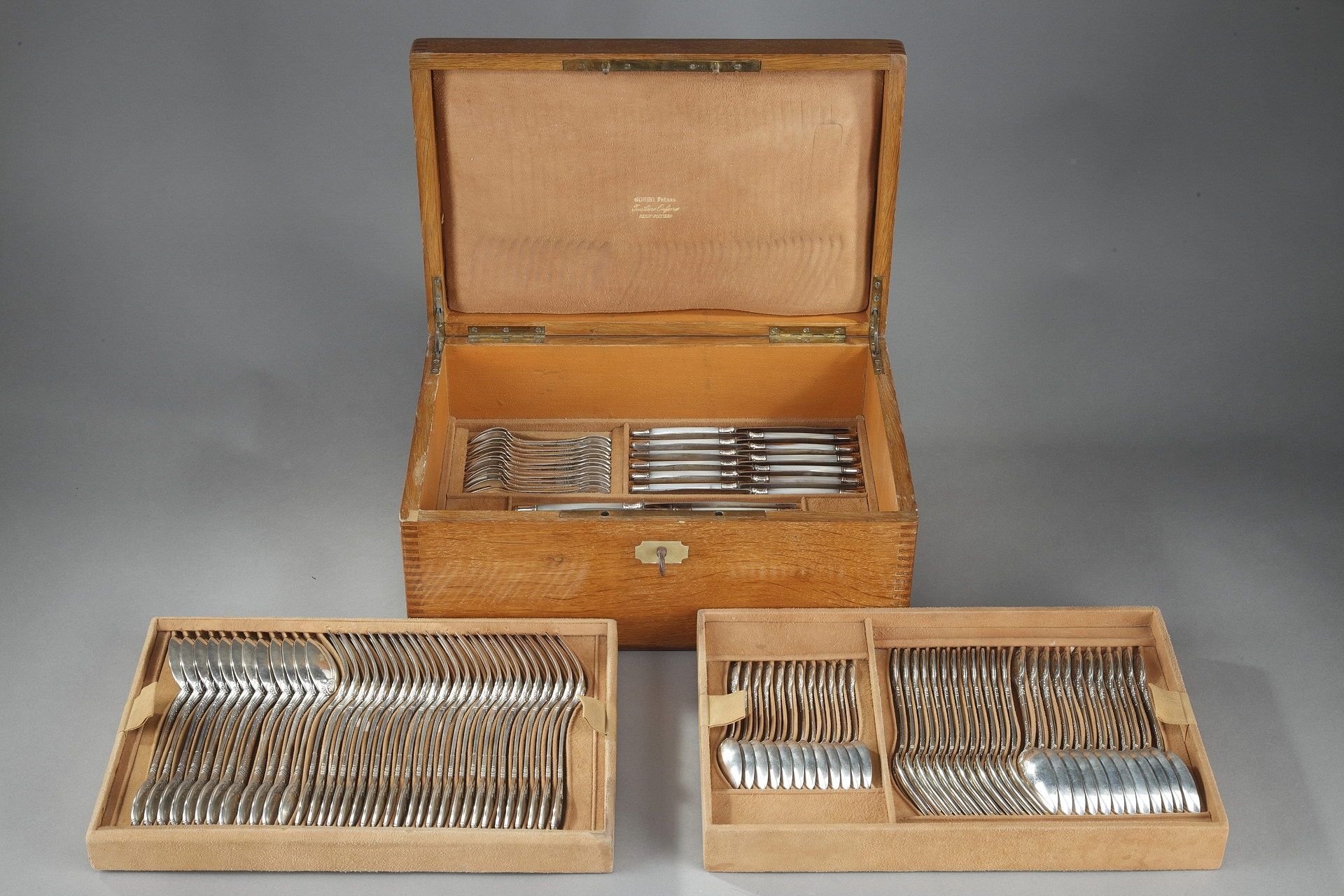

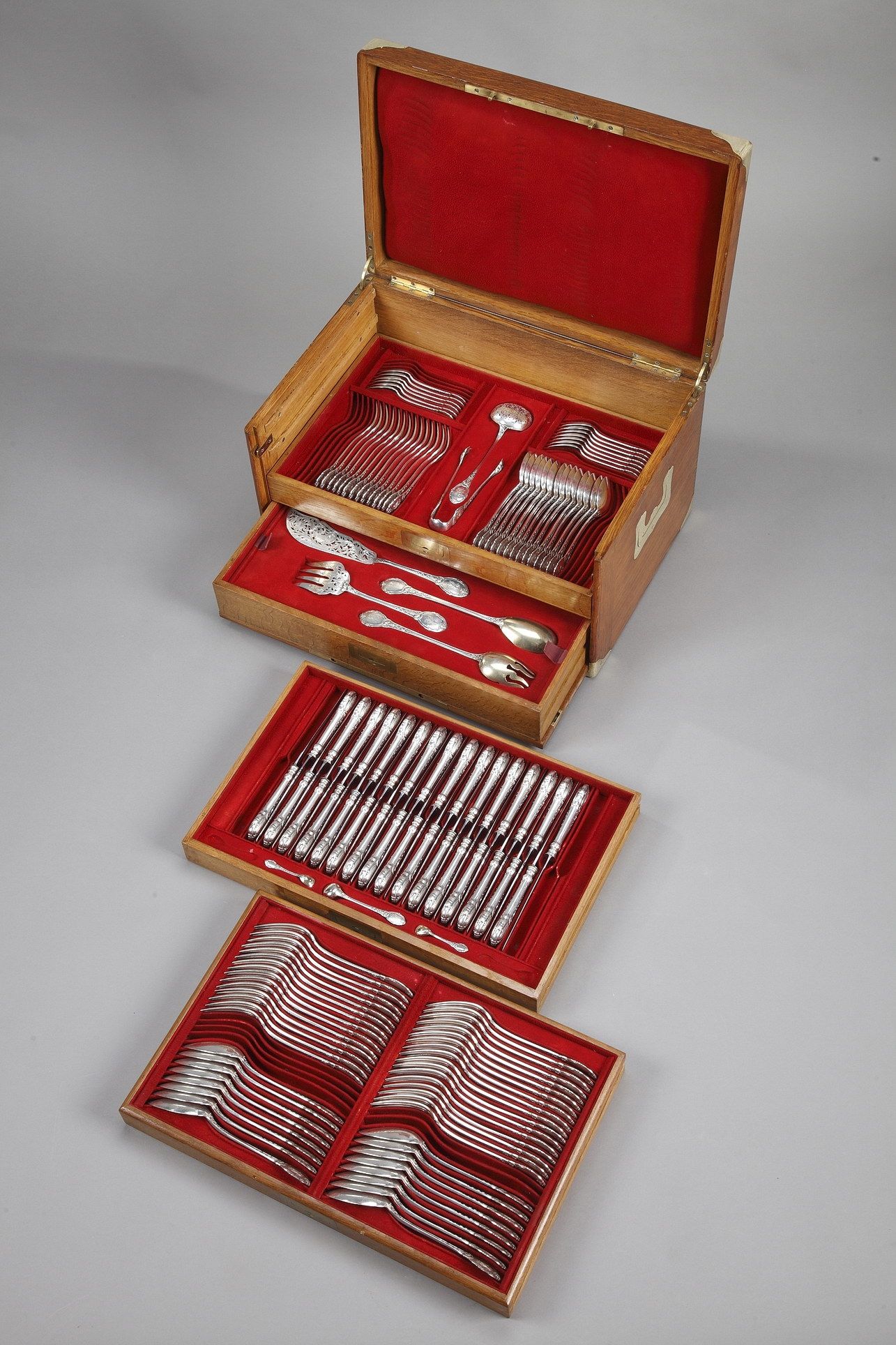 flatware Henri Soufflot
flatware Henri Soufflot